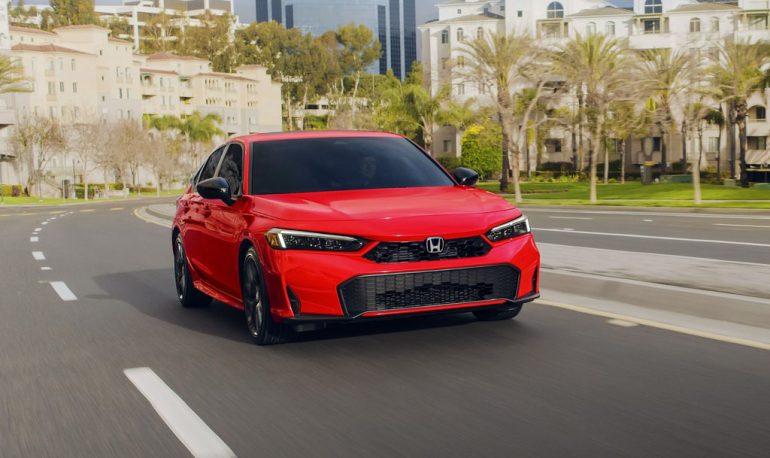
In a move that could signal a growing trend among global automakers, Honda is relocating production of its next-generation Civic hybrid from Mexico to Indiana to sidestep the looming U.S. tariffs on imports from Mexico and Canada. According to sources familiar with the matter, this strategic shift aims to safeguard one of Honda’s top-selling models from the financial impact of President Donald Trump’s proposed 25% tariffs.
The decision marks a major pivot for Honda, Japan’s second-largest automaker, and highlights the sweeping effects these tariffs may have on global production strategies. Honda originally intended to build the next-gen Civic at its Guanajuato, Mexico plant, with production set to begin in November 2027. However, with tariffs casting uncertainty over cross-border manufacturing, Honda has now pushed production to May 2028 in Indiana, with an estimated annual output of around 210,000 units.
While this is a significant move for Honda, it may just be the tip of the iceberg. The Civic, which sold more than 240,000 units in the U.S. last year and stands as Honda’s second-best seller after the CR-V, is an iconic nameplate. If a volume-heavy, high-demand model like the Civic is shifting production to avoid tariffs, other automakers are likely weighing similar decisions across their lineups.
Honda’s announcement underscores a larger concern within the industry. Japanese, European, and even U.S.-based automakers have long relied on Mexico as a lower-cost production hub, not just for sedans like the Civic, but also for trucks, SUVs, and electric vehicles. With around 40% of Honda’s U.S. sales sourced from Mexico and Canada, the tariff threat doesn’t just impact the Civic—it puts pressure on multiple models and, ultimately, consumer pricing.
If the Trump administration’s proposed tariffs become reality, we could see other vehicles follow the Civic’s path north. Automakers like Toyota, Nissan, Volkswagen, and Ford, all of which have sizable Mexican operations, may soon announce production shifts for key models to avoid steep cost hikes. What was once a carefully optimized global supply chain is suddenly being forced to reconfigure, with Indiana, Ohio, and other U.S. states likely to benefit from reshoring efforts.
Honda’s case highlights just how disruptive these tariffs could be. Shifting production isn’t as simple as flipping a switch. New tooling, labor training, and facility upgrades require massive investment, not to mention the impact on suppliers that support these factories. Moving the Civic back to Indiana is a proactive step, but it comes with challenges. If demand exceeds Indiana’s production capacity, Honda may have to rely on imports from countries not targeted by tariffs—a logistical puzzle with its own risks.
Adding further complication, retaliatory tariffs from Mexico and Canada could escalate costs even more. Honda currently exports about 60,000 vehicles from the U.S. to those two countries, meaning any tit-for-tat trade moves would affect profitability from multiple angles.
For years, Mexico has been a vital piece of the puzzle for automakers aiming to balance production costs with competitive pricing in the U.S. market. Now, that balance is shifting. With trade policy becoming a key driver in manufacturing decisions, consumers could eventually see the effects through higher vehicle prices, limited model availability, or delayed product launches.
Honda’s move to bring the Civic hybrid home to Indiana is just the first official domino to fall. As we move closer to the potential enactment of tariffs, the industry is bracing for more reshuffling. Whether it’s compacts like the Civic, popular SUVs, or emerging EV models, the next few years may mark a seismic shift in where and how your favorite vehicles are made.

Mike Floyd is a finance executive by trade and a car enthusiast at heart. As a CFO with a keen eye for detail and strategy, Mike brings his analytical mindset to the automotive world, uncovering fresh insights and unique perspectives that go beyond the surface. His passion for cars—especially his favorite, the Porsche 911, fuels his contributions to Automotive Addicts, where he blends a love for performance and design with his professional precision. Whether he’s breaking down industry trends or spotlighting emerging innovations, Mike helps keep the site both sharp and forward-thinking.